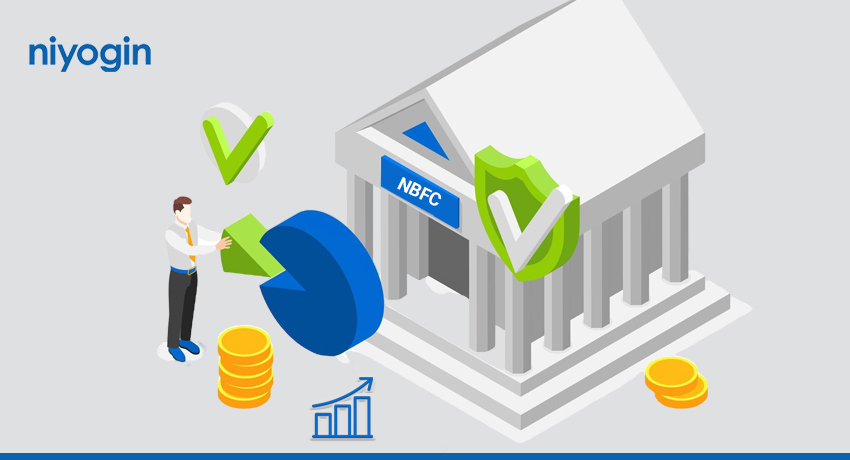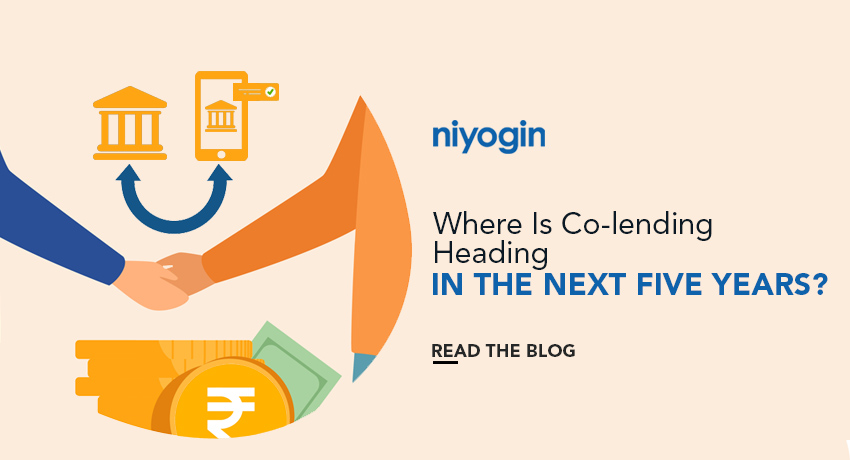A potentially rich environment of opportunities and challenges arises in the complex world of NBFCs in India. Functioning as essential elements of the country’s financial system, NBFCs are at the intersection of innovation, risk, and socioeconomic dynamics, ready to spark development and wealth. But they face a host of challenges in the face of rapidly evolving regulations, technological advancements, and macroeconomic swings, from liquidity issues to governance conundrums. However, behind these obstacles are opportunities for them to rethink their mission, embrace flexibility, and develop inclusive financial solutions that go beyond conventional norms. This prompts a profound inquiry: how can NBFCs navigate the uncertain path ahead, utilizing adversity as a catalyst for innovation, and forging a trajectory where challenges evolve into stepping stones towards enduring success? Challenges for NBFCs in India 1. Keeping up with the Regulations – NBFCs in India operate within a rigorous regulatory framework established by the Reserve Bank of India. While these regulations are essential for safeguarding financial stability, they can be seen as constraining by NBFCs. Moreover, changes in regulatory policies or the introduction of new guidelines often necessitate swift adaptation, requiring NBFCs to invest in technology and enhance their compliance infrastructure. The intricate and dynamic nature of these regulations necessitates continuous vigilance and proactive measures from NBFCs, influencing their strategic planning and resource allocation decisions. 2. Funding and Liquidity Management – NBFCs heavily rely on external funding for their lending activities, unlike traditional banks that utilize customer deposits. They depend primarily on borrowing from banks, issuing bonds, or obtaining loans from financial institutions. Securing sufficient funding can be especially challenging during economic downturns or periods of financial instability, leading to higher borrowing costs and restricted access to credit. This directly impacts their liquidity and ability to expand operations. Effective liquidity management is crucial for NBFCs to meet financial obligations such as loan repayments and regulatory compliance. Balancing various funding sources, managing liquidity effectively, and sustaining profitability are ongoing challenges for NBFCs in India. Opportunities for NBFCs 1. Explore Niche Markets – NBFCs can succeed by discovering and targeting specific markets. This could include sectors such as microfinance, where small loans are provided to individuals or businesses who typically lack access to traditional banking services. For this, NBFCs may offer small loans with flexible repayment terms to support the financial needs of entrepreneurs and small businesses. NBFCs can concentrate their resources and efforts on developing expertise in particular industries by concentrating on those. This would include investing in staff training, creating customized underwriting models, and establishing partnerships with stakeholders in the sector. 2. Co-lending opportunities – Collaboration with banks through co-lending arrangements, as approved by the RBI, can be a win-win situation. By working together to increase liquidity, NBFCs can expand their lending portfolios without overburdening their balance sheets. Additionally, co-lending agreements allow the parties to share risks, reducing individual exposure and increasing portfolio diversification. These partnerships give NBFCs access to a steady stream of funding and opportunities for strategic expansion and market share. Co-lending agreements, taken as a whole, enable NBFCs to maximize lending operations, cultivate resilience, and seize new opportunities in the ever-changing financial landscape. 3. Digital Transformation – NBFCs use data analytics to make well-informed decisions rapidly and accurately, ranging from the digitization of loan origination and underwriting processes to the integration of AI-powered credit scoring models. Additionally, they are revolutionizing customer engagement through digital channels such as mobile apps and online platforms, providing seamless experiences for tasks like account management, payments, and support services. They are also strengthening cybersecurity measures to protect sensitive information and transactions, thereby fostering trust and reliability amongst users in the digital domain. NBFCs in India find themselves at a critical juncture, grappling with regulatory challenges and fierce market competition while also being presented with promising avenues for growth. In navigating this landscape, it becomes imperative to foster robust coordination and engagement among regulators, fintech enterprises, traditional financial institutions, and other relevant stakeholders.
Tag: NBFCs
Where is Co-lending heading in the Next Five Years?
The Reserve Bank of India (RBI) announced rules on co-lending by banks and non-bank financial companies (NBFCs) to priority sectors. The primary goal of the revised scheme, renamed “Co-Lending Model” (CLM), is to increase credit flow to the unserved and underserved sectors of the economy and make funds available to the ultimate beneficiary at an affordable cost, taking into account the lower cost of funds from banks and the greater reach of NBFCs. How did co-lending grow? In 2020, the capacity of MSMEs plummeted from 75% to 13%, with around 69% of MSMEs unable to survive for more than 3 months. This was the year the RBI authorized banks to partner with NBFCs through co-lending. The funds were distributed 80-20 in this case, with banks providing the vast majority of the funds. This agreement simplifies the loan process for developing businesses and MSMEs. Benefits of co-lending Co-lending in the financial services industry provides several benefits to banks, NBFCs, and consumers. To Banks Co-lending allows banks to extend their credit to key sectors. Banks can benefit from NBFCs’ experience and reach in specific market niches by cooperating with them. Allows banks to benefit from product developments and lower interest rates, thereby extending their lending portfolio. Assists banks in meeting regulatory criteria such as priority sector lending standards. Allows banks to expand their presence in underdeveloped areas by bridging the credit gap and providing financial services to potential consumers. To NBFCs NBFCs might use their expertise in particular sectors to target underserved customers. By collaborating with banks, NBFCs have access to lower-cost capital and a larger customer base. This enables NBFCs to offer attractive interest rates and customized loan solutions, increasing credit flow to priority sectors and boosting financial inclusion initiatives. The technical interventions and digital penetration of their partner banks can assist NBFCs. Co-lending arrangements enable NBFCs to maximize their potential consumer reach while also contributing to the market’s credit deficit. To customers This agreement benefits consumers immensely, especially underserved clients who may have restricted access to finance. You can get a variety of loan products and enjoy low-interest rates. The process is speedier since it shortens the time between loan approvals and payouts. It is also critical to guaranteeing loan availability in underrepresented industries and rural locations. Allows small enterprises and individuals to obtain low-cost financing. Future of Co-lending: A key tool for economic growth According to recent trends and co-lending targets, the peak of co-lending is still to come. The RBI launched co-lending to increase financial flow to priority industries, which are SMEs in India. As the Indian SME market is expected to be worth $300–400 billion by 2025, co-lending is the way to go in order to ensure credit access to these growing enterprises and, as a result, aim to unlock a trillion-dollar opportunity in terms of digital lending. Finally, the co-lending strategy could solve the country’s multi-trillion-dollar liquidity problem. The process was facilitated by the thriving Indian fintech industry. The highly prospective and good results of co-lending have made it an appealing choice for banks, NBFCs, and large-scale investors alike. The market for digital lending platforms is expected to reach USD 26.6 billion by 2028. And, with increasing innovation in the field of fintech and artificial intelligence, the expansion of finance alternatives in unanticipated ways is still to come.
The Future Of Online Banking In India
Digital banking in India is expected to grow with a CAGR of 23.1% from 2022 to 2030. NBFC growth is also estimated to hit $5 trillion in 2024. E-Banking existed as an additional service before COVID-19. However, after the pandemic, globally, the concept of Internet banking has changed. Indian banks have achieved phenomenal growth by adopting digital technologies. Banks hope to have a multi-dimensional relationship with customers to improve banking services. Upcoming Digital Banking Trends As digital banking continues to grow, it opens up new opportunities to reach the underserved market. Rural India has numerous small businesses and cottage industries that can thrive well with futuristic funding options. However, it was difficult for banks to reach out to those consumers. The following digital banking trends will bring financial services and products closer to the rural parts of the country as well: Mobile Banking According to a study, 89% of consumers use mobile banking services. Mobile wallets are also increasingly adopted by rural India due to the widespread growth of digitisation. Security is often a major concern for mobile banking users. Mobile banking has reached 5X growth compared to online banking. Mobile banking will gain even more popularity as the number of millennials and Gen Z customers increases. Emerging Trend Of Neobanks Neobanks are growing at a rapid pace in India. These neobanks operate digitally without any physical branches. They are great alternatives to traditional banks, offering innovative products and reaching out to underserved markets. Due to RBI regulations, Neobanks partners with traditional banks to extend customer services. BaaS The banking As A Service (BaaS) sector is causing major disruption in the fintech industry. Instead of building every service from scratch, it is much easier for NBFCs (Non-Banking Financial Companies) to set up Neobanks using the BaaS platform. The neobank technology stack can be customised according to the goals and needs of NBFCs. Partnering with a BaaS provider such as Niyogin, neobanks can offer services using the APIs. They can build on the infrastructure platform already complete with rails that can easily connect with rural customers. Innovative Technologies According to Insider Intelligence Survey, 66% of banking professionals believe that newer technologies such as Artificial Intelligence (AI), blockchain, and the Internet of Things (IoT) will positively impact banking by 2025. AI is now widely used in credit risk evaluation, customer authentication, and customer support. Blockchain technology will also help financial institutions cut down middlemen and reduce operational costs. Challenges For Future Digital-Only Banks Currently, RBI has a strict regulatory framework for digital banks. Digital banks must comply with liquidity standards and capital adequacy similar to commercial banks. Initially, these banks can get a restricted license, and after proving their efficiency, they can upgrade their license. To avail of digital banking services, customers need computer literacy. This is one of the main challenges for digital banks interested in providing services to rural India. Also, the need for secure banking services is also on the rise. The digital banking platform market is expected to reach $1485.5 million by 2028, from $776.7 million in 2021. Currently, 26% of Indians have a digital bank account, which is expected to grow in the future. RBI is also creating a closed sandbox environment for digital banking services. The budget has also carved some space for digital bank units, which is a clear sign of progression for the Indian banking sector. A fintech partner like Niyogin will help banking institutions easily transition from legacy systems to modern and advanced banking technology for futuristic customers.


